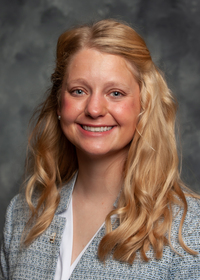Information Possibly Outdated
The information presented on this page was originally released on April 23, 2009. It may not be outdated, but please search our site for more current information. If you plan to quote or reference this information in a publication, please check with the Extension specialist or author before proceeding.
Cow genome blueprint provides new information
By Karen Templeton
MSU Ag Communications
MISSISSIPPI STATE – Cattle and dairy producers stand to benefit from cutting-edge genetic research conducted by scientists around the world and at Mississippi State University.
More than 300 scientists from 25 countries formed a consortium to fully map the bovine genome. The study, partially funded by Mississippi’s Agricultural and Forestry Experiment Station, was conducted over six years and has proven successful as researchers developed a blueprint of the bovine’s DNA.
The blueprint helps lay the groundwork for a better understanding of the species. The new information can be used to help produce cattle with valuable traits and possibly aid in better understanding human disease and development. The study received international attention and was published in the April 24 issue of the scientific journal Science Magazine.
Dr. Erdogan Memili, assistant professor in MSU’s Department of Animal and Dairy Sciences, and his former graduate student, Nelida Rodriguez-Osorio, had key roles in the study. They coordinated the analyses of specific characteristics of bovine genes affecting reproductive traits and early embryo development. They also collaborated with other researchers in writing the study’s final report.
Memili’s research group and collaborators also published three companion papers to the cow genome study in the Journal of BMC Genomics.
“Now that the genetic blueprint of the cow is known, researchers can identify the specific genes and gene products needed to produce economically important traits in cattle,” Memili said.
He said the blueprint holds new information about what pieces of the cow’s DNA are responsible for traits such as milk or meat production and disease resistance. Scientists use a technique called marker assisted breeding to identify the animals carrying these important traits and breed them to produce the desired traits in their offspring.
“This has worldwide significance because a bull with a superior genetic trait can be bred with thousands of cows around the world through artificial insemination technology,” Memili said. “The result is producers being able to pinpoint what traits they need and find the specific animals that can provide them.”
Dr. Abdullah Kaya, a researcher with AltaGenetics – the world’s largest privately owned reproduction and genetic improvement company – said that fully understanding the cow genome is sure to have a significant impact on the industry. The blueprint not only provides information about economically important traits, but also leads scientists to the most fertile animals.
“Fertility among dairy cows has declined 28 to 30 percent, and as a result, producers are breeding their cattle three to four times as often,” Kaya said. “Knowing the specifics of the genome allows us to identify the most fertile cattle. Pinpointing those with the highest fertility cuts down on the time and expense associated with repeated breeding.”
Memili said better breeding strategies resulting from the genome mapping can enhance production efficiencies and the sustainability of cattle production systems.
Researchers also found that cattle and humans are more alike than previously thought and that humans have more in common with cattle than with mice.
“This means the cow can be used as a model organism to help answer important questions related to human reproduction, development and disease,” he said.
Memili said there is still more knowledge to be gained from the new genome research.
“This is really the beginning,” Memili said. “With this blueprint, we can finally answer questions related to cattle and the future of the industry.”
The full study is available at http://www.sciencemag.org.






